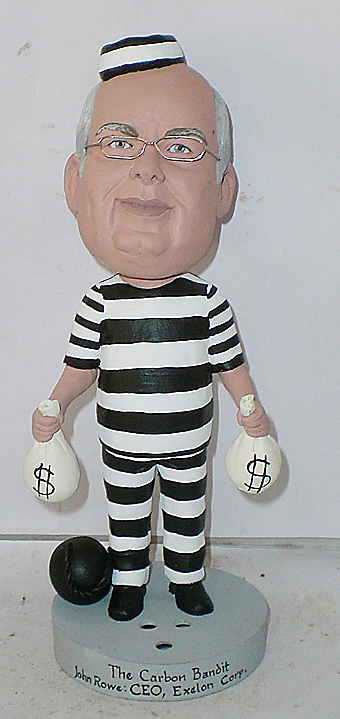This article begins a series examining the science and economics behind the U.S. Environmental Protection Agency’s proposals to tighten air quality standards for ground-level ozone (O3 or smog) and fine particulate matter (PM2.5 or soot). There are two proposed EPA rules at issue:
- National Ambient Air Quality Standards for Ozone (NAAQS), proposed in January 2010; and
- Clean Air Transport rule, proposed in July 2010.
Starting with the science used by the EPA to justify its regulatory action with respect to smog, the agency proposed to make more stringent the ozone NAAQS as follows:
EPA proposes that the level of the 8-hour primary standard, which was set at 0.075 ppm in the 2008 final rule, should instead be set at a lower level within the range of 0.060 to 0.070 parts per million (ppm), to provide increased protection for children and other ‘‘at risk’’ populations against an array of O3-related adverse health effects that range from decreased lung function and increased respiratory symptoms to serious indicators of respiratory morbidity including emergency department visits and hospital admissions for respiratory causes, and possibly cardiovascular-related morbidity as well as total nonaccidental and cardiopulmonary mortality.
The first field study that the EPA cites in its proposal is a 1998 study by Korrick et al. that the EPA describes as follows:
The results of one large study of hikers (Korrick et al., 1998), which reported outcome measures stratified by several factors (e.g., gender, age, smoking status, presence of asthma) within a population capable of more than normal exertion, provide useful insight. In this study, lung function was measured before and after hiking, and individual O3 exposures were estimated by averaging hourly O3 concentrations from ambient monitors located at the base and summit. The mean 8-hour average O3 concentration was 0.040 ppm (8-hour average concentration range of 0.021 ppm to 0.074 ppm O3). Decreased lung function was associated with O3 exposure, with the greatest effect estimates reported for the subgroup that reported having asthma or wheezing,
and for those who hiked for longer periods of time.
Here’s how the study was conducted, according to its authors:
During the summers of 1991 and 1992, volunteers (18-64 years of age) were solicited from hikers on Mt. Washington, New Hampshire. Volunteer nonsmokers with complete covariates ( n = 530) had pulmonary function measured before and after their hikes. We calculated each hiker’s posthike percentage change in forced expiratory volume in 1 sec (FEV1 ) , forced vital capacity (FVC) , the ratio of these two (FEV1 /FVC) , forced expiratory flow between 25 and 75% of FVC (FEF 25-75% ), and peak expiratory flow rate (PEFR).
Here are the reported results:
After adjustment for age, sex, smoking status (former versus never) , history of asthma or wheeze, hours hiked, ambient temperature, and other covariates, there was a 2.6% decline in FEV1 [95% confidence interval (CI) , 0.4-4.7 ; p = 0.02] and a 2.2% decline in FVC (CI, 0.8-3.5 ; p = 0.003) for each 50 ppb increment in mean O3.
Accepting these results at face value (i.e., blaming O3 for the reported effect), none are of clinical significance. FEV1 values between 80% to 120% of average are considered normal. It follows then that a 2.6% decline, especially after strenuous hiking, is not clinically significant.
But then is it really appropriate to attribute even this insignificant decline to O3 in the first place?
Fig. 2 in the study indicates that O3 levels varied throughout the day, but the researchers only took spirometry measurements at the beginning and end of each hike. So there’s no data that indicate spirometry measurements varied with changes in O3 levels.
Even if it was possible to wave a statistical wand over the FEV1 and FVC measurements to adjust for the potential confounding risk factors (most of which were self-reported and not verified or validated by the researchers), important potential confounding risk factors variables were omitted, e.g., hiker fitness and hiking intensity to name just two.
Moreover, hikers were volunteers and not selected at random, possibly introducing some sort of bias into the mix.
The researchers needed to show that O3 caused the changes in spirometry, but they didn’t. In any event, the changes weren’t clinically significant.
At most, this study provides evidence that hiking up and down a mountain may slightly affect one’s breathing. It does not show, as the EPA claims, that even low levels of O3 (i.e., levels 47% lower than the current standard) are a public health problem.
